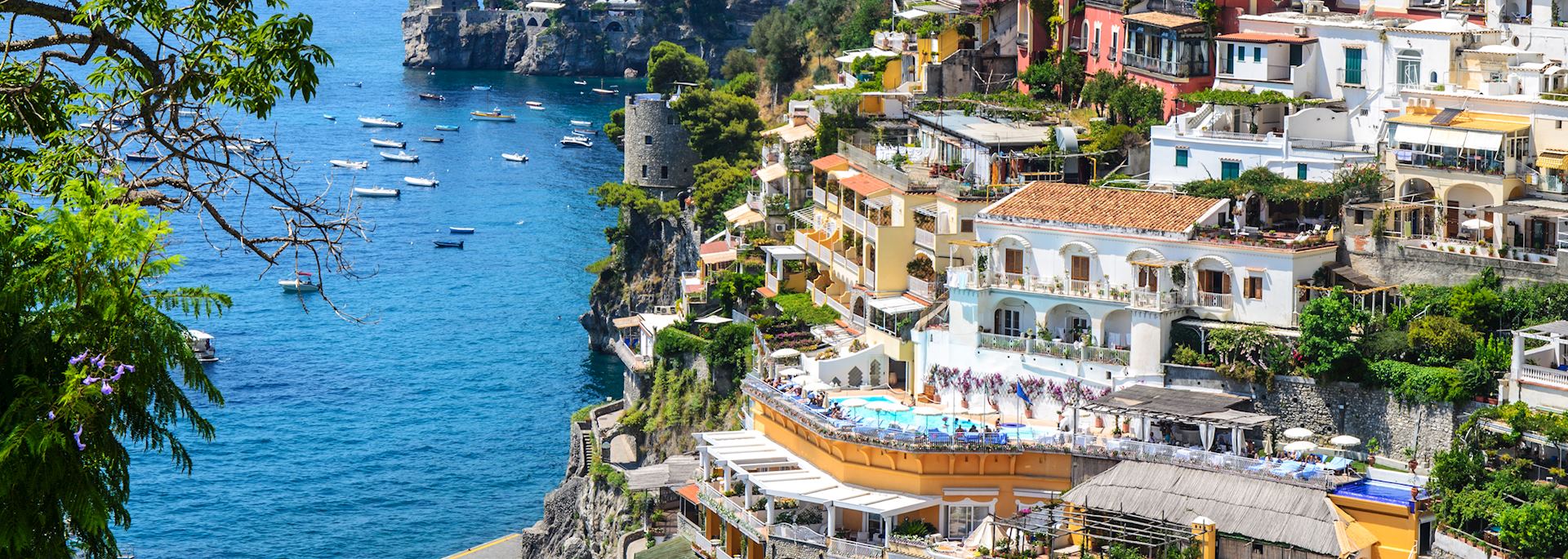Anúncios
Dreaming of strolling through the enchanting streets of Rome, savoring authentic gelato in Florence, or witnessing the serene beauty of the Amalfi Coast? Planning your trip to Italy from the USA can be as thrilling as it is overwhelming.
The key to unlocking the best of Italy lies in timing your visit just right. But when exactly is that perfect moment? You might wonder if it’s the vibrant buzz of summer, the charming allure of spring, or perhaps the tranquil escape of fall.
Anúncios
Each season offers a unique experience, and choosing the right one can make all the difference in your adventure. Dive into this guide to discover the ideal time for your Italian getaway, ensuring your experience is not just memorable but also tailored to your desires. Stay with us and find out how to make your dream trip a reality.
Climate Considerations
Traveling from the USA to Italy can be an unforgettable experience. Italy offers diverse climates throughout the year. Understanding these climate variations helps in planning the perfect trip. Different seasons provide unique experiences, making Italy a year-round destination. Weather plays a vital role in determining the best time to visit. From spring’s blossoms to winter’s chill, Italy has much to offer.
Anúncios
Spring And Fall Weather
Spring and fall are ideal for visiting Italy. Mild temperatures dominate these seasons. In spring, flowers bloom, and landscapes transform. Fall brings vibrant colors and harvest festivals. Both seasons offer comfortable weather for sightseeing. Rainfall is moderate, and humidity stays low. These conditions make outdoor activities enjoyable.
Summer Heat
Summer is popular among tourists for beach vacations. Temperatures rise, often exceeding 30°C (86°F). Cities like Rome and Florence can be crowded. Coastal areas offer relief with cool breezes. Tourists flock to the beaches for sunbathing. Early mornings and late evenings are cooler. Hydration and sun protection are essential.
Winter Chill
Winter in Italy is unique and less crowded. Temperatures drop, especially in northern regions. Snow covers mountains, attracting skiers. Cities like Venice offer serene experiences. Holiday markets and festive decorations abound. Layered clothing ensures comfort in chilly weather. Winter provides a peaceful retreat from bustling crowds.

Credit: www.audleytravel.com
Tourist Seasons
Italy is a dream destination for many travelers from the USA. Each season offers unique experiences. Understanding the tourist seasons helps plan the perfect trip. Knowing when to travel can make a difference in your Italian adventure. Let’s explore the different tourist seasons in Italy.
High Season Crowds
High season in Italy runs from June to August. This is summer in Italy. Expect larger crowds at popular attractions. Famous cities like Rome, Florence, and Venice become very busy. Prices for flights and hotels often rise. Booking in advance is essential. The weather is warm, perfect for beach visits.
Off-peak Advantages
Off-peak seasons are November to March. Fewer tourists visit Italy during this time. Enjoy shorter lines at museums and historical sites. Flights and accommodations can be cheaper. Winter sports are popular in the Alps. Experience Italy’s festive Christmas markets.
Shoulder Season Benefits
Shoulder seasons are April to May and September to October. The weather is mild and pleasant. Tourist crowds are smaller, especially in famous spots. You can find good deals on travel and stays. Enjoy the beauty of Italian landscapes. Spring flowers and autumn harvests make these months special.
Cultural Events
Italy’s vibrant cultural events make it a top travel destination. From colorful festivals to mesmerizing art shows, there’s always something happening. Timing your trip around these events can enrich your experience.
Festivals And Celebrations
Italy hosts world-famous festivals throughout the year. Carnevale di Venezia, held in February, attracts visitors with its elaborate masks. It’s a spectacle of parades, music, and dance. In June, Festa della Repubblica celebrates Italy’s national day with grand parades. Summer brings the Palio di Siena, a thrilling horse race in Tuscany. Each event showcases Italy’s rich traditions and lively spirit.
Local Holidays
Local holidays offer a unique glimpse into Italian life. Ferragosto in August marks a national holiday, with many Italians heading to beaches. Christmas and Easter are celebrated with religious events and feasts. Visiting during these times allows you to experience Italy’s cultural depth. Smaller towns celebrate patron saint days with local fairs, providing intimate cultural insights.
Art And Music Events
Italy’s art scene is globally renowned. The Venice Biennale, held every two years, displays contemporary art from around the world. Music lovers can enjoy opera seasons in Milan’s La Scala. In summer, the Verona Arena hosts spectacular opera performances. Art exhibitions and music festivals are frequent, offering captivating experiences. These events highlight Italy’s artistic legacy and modern creativity.
:max_bytes(150000):strip_icc()/Bergamo-Lombardy-Italy-WTGITALY0218-7f5812e1c0ea4c4cbcf1b11888a9a645.jpg)
Credit: www.travelandleisure.com
Cost Factors
Traveling to Italy from the USA is a dream come true for many. But understanding the cost factors can make your trip both enjoyable and affordable. Your wallet matters, and being strategic about when you travel can save you a lot. Let’s dive into the financial side of planning your Italian adventure.
Flight Pricing Trends
Flight prices fluctuate throughout the year, and knowing when to book can be a game-changer. During peak tourist seasons, like summer and major holidays, prices soar. But if you aim for shoulder seasons—spring and fall—you might snag a great deal.
Have you considered flying mid-week? Tuesday and Wednesday flights often come cheaper than weekend ones. Last year, I booked a round-trip flight in early May and saved almost $200 compared to June prices.
Accommodation Rates
Italy offers a range of accommodations, from luxurious hotels to charming bed-and-breakfasts. Prices typically rise with demand. In cities like Rome and Florence, hotel rates skyrocket during peak months.
Opting for less popular times, such as late September, can lead to significant savings. I once stayed at a picturesque villa in Tuscany at half the summer rate. Booking early also helps secure better deals.
Dining And Activity Expenses
Italian cuisine is a highlight, but dining costs vary. Restaurants in tourist-heavy areas charge more, especially during busy seasons. Exploring local eateries in quieter months can be both delicious and budget-friendly.
Activities, too, can be more affordable during off-peak times. Museums might offer discounted entry fees, and guided tours could be less crowded and cheaper. What’s your ideal Italian experience? Timing it right might enhance it without breaking the bank.
Traveling smartly means knowing your budget and timing. By understanding these cost factors, you can plan a trip that’s both memorable and financially savvy. Italy awaits, and with a little planning, it’s yours to enjoy without the stress of overspending.
Regional Highlights
Italy’s charm varies by season. Spring and fall offer mild weather and fewer crowds, perfect for exploring Tuscany’s vineyards. Summer is ideal for beach lovers, with warm temperatures along the Amalfi Coast and Sicily. Winter invites travelers to enjoy Italy’s festive spirit, especially in snowy northern regions.
Traveling to Italy from the USA is a dream for many, and choosing the right time can make your experience even more magical. Italy’s regions offer diverse experiences, so knowing what each area offers during different seasons is key. Here, we explore the regional highlights of Northern, Central, and Southern Italy to help you decide the best time for your trip.
Northern Italy Attractions
Northern Italy is a treasure trove of majestic landscapes and cultural riches. In spring, the Italian Alps offer breathtaking views and perfect conditions for hiking. Imagine walking through lush trails with snow-capped mountains as your backdrop. Summer is ideal for exploring the iconic cities of Venice and Milan. The weather is warm, and you can enjoy the vibrant street life and outdoor cafes. Autumn brings a special charm to the region. The vineyards in regions like Piedmont are a sight to behold, with grape harvests and wine festivals creating a festive atmosphere.
Central Italy Gems
Central Italy, including Tuscany and Umbria, is known for its rolling hills and historic towns. Spring is a wonderful time to visit, with blooming flowers and pleasant temperatures. Summer can be hot, but it’s perfect for spending time in Florence’s museums or enjoying the beaches of the Tuscan coast. Autumn is when the countryside truly shines. Harvest season means truffle festivals in Umbria and wine tastings in Tuscany. It’s a food lover’s paradise.
Southern Italy Charms
Southern Italy offers a unique blend of history and stunning coastlines. Winter is mild, making it a great time to explore ancient sites like Pompeii without the crowds. Spring and autumn are fantastic for visiting the Amalfi Coast. The weather is just right for hiking the famous Path of the Gods or enjoying a limoncello in a seaside café. Summer in the south is all about the beach. The pristine waters of Sicily and Sardinia beckon, offering relaxation and adventure. Have you considered which region of Italy speaks to you the most? Each area offers its own unique charm depending on the season, so aligning your travel plans with your interests can make all the difference. Whether you’re drawn to the snow-capped peaks of the north, the rolling hills of the center, or the sun-drenched beaches of the south, Italy has something special waiting for you.

Credit: www.ricksteves.com
Travel Tips
Spring and fall offer ideal travel conditions for Italy, with pleasant weather and fewer crowds. April to June and September to October are perfect for exploring historic sites and enjoying local festivals. Plan your trip during these months to experience Italy’s charm without the summer rush.
Traveling to Italy from the USA is an exciting adventure, filled with unique experiences and unforgettable moments. Whether you’re exploring the historic streets of Rome or savoring authentic pasta in Florence, preparation is key to making the most of your trip. Travel Tips will help you navigate this beautiful country with ease and confidence. From packing the right essentials to understanding transportation and local etiquette, these insights will ensure your Italian journey is smooth and enjoyable.
Packing Essentials
Packing for Italy requires a thoughtful approach. The country’s diverse climate means you’ll need a mix of clothing. In spring or fall, pack layers to adapt to changing temperatures. Don’t forget comfortable walking shoes—Italy’s cobblestone streets can be unforgiving. A small backpack is perfect for day trips and keeping your valuables secure. Consider adding a universal adapter for your electronics. Italy uses different plug types, and you don’t want to be caught without power for your phone or camera.
Transportation Options
Italy offers various transportation options, each with its own charm. Trains are fast, efficient, and connect major cities seamlessly. If you’re planning to visit multiple regions, a Eurail pass might be a cost-effective solution. Buses can be a budget-friendly alternative, especially for less accessible towns. Renting a car gives you the freedom to explore remote areas at your own pace. However, be prepared for narrow roads and unique driving styles. Taxis and rideshares are convenient for short distances. Remember to agree on fares beforehand to avoid surprises.
Language And Etiquette
While many Italians speak English, learning a few basic Italian phrases can enhance your experience. A simple “Grazie” (thank you) or “Buongiorno” (good morning) can go a long way in building rapport. Etiquette is important in Italy. When dining, avoid rushing through meals. Italians value the art of dining and appreciate savoring food. Respect local customs and dress modestly when visiting religious sites. This shows reverence and understanding of cultural significance. Would you feel comfortable if a tourist disregarded your customs? By embracing these tips, you’ll not only enjoy the stunning landscapes and rich history but also connect with the heart of Italy.
Frequently Asked Questions
What Is The Best Month To Visit Italy?
April to June and September to October are ideal. These months offer pleasant weather and fewer tourists. You’ll enjoy mild temperatures and vibrant festivals. It’s perfect for exploring cities and countryside.
Is Winter A Good Time To Visit Italy?
Winter is great for skiing in the Alps and Dolomites. Cities like Rome and Florence have fewer tourists. Enjoy festive Christmas markets and unique cultural experiences. However, some attractions may have reduced hours.
Are Flights Cheaper In The Off-peak Season?
Yes, flights are often cheaper from November to March. Traveling during these months can save you money. You’ll find better deals on accommodation as well. Avoiding peak season crowds is another benefit.
What Should I Pack For An Italian Summer Trip?
Pack light, breathable clothing for summer in Italy. Don’t forget sunscreen, sunglasses, and a hat. Comfortable walking shoes are essential for exploring. A reusable water bottle will keep you hydrated.
Conclusion
Choosing the best time to visit Italy makes a difference. Consider the weather and crowd levels for a memorable trip. Spring and fall offer mild temperatures and fewer tourists. Summer is lively but crowded and hot. Winter allows for cozy experiences and less crowded attractions.
Each season presents unique experiences. Plan according to your interests and preferences. Italy’s beauty and culture await your discovery. Enjoy the food, history, and landscapes. Travel smart, and your Italian adventure will be unforgettable.





